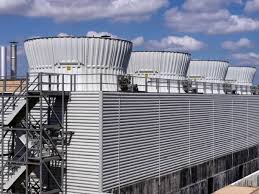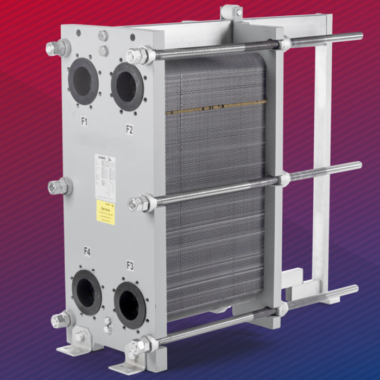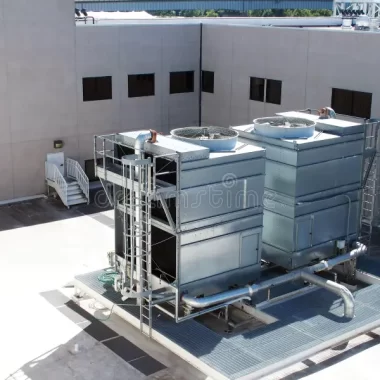Modular – Conventional Cooling Tower
Introduction
Modular vs. Conventional Cooling Tower systems offer distinct approaches to industrial cooling, each with its unique advantages. Modular cooling towers are designed to provide flexible, scalable solutions by allowing for phased expansion as demand grows. This makes them ideal for businesses that need to increase cooling capacity incrementally, minimizing upfront costs and reducing lead times. On the other hand, conventional cooling towers are typically designed for large-scale, permanent installations, optimized for full capacity and long-term performance. These systems are better suited for industries with steady, high-volume cooling needs, offering robust and integrated control systems for efficient operations.
Modular Cooling Towers

Modular cooling towers consist of individual, self-contained units that can be added or removed to meet specific cooling requirements. This flexibility allows for easier scalability as demand fluctuates, making it an attractive option for industries with variable load demands or future expansion plans.
- Ease of Expansion: Modular cooling towers can easily be scaled up by adding more modules, minimizing downtime and installation complexity.
- Reduced Initial Investment: Businesses can start with a smaller capacity and gradually expand, avoiding large upfront costs.
- Energy Efficiency: With the ability to shut down unused modules during lower demand periods, modular designs can help save energy, improving operational efficiency.
- Redundancy and Reliability: In case of failure, a modular system allows for better fault tolerance, as other modules can continue operating while the damaged one is repaired or replaced.
- Quicker Installation: Modular towers can be installed in phases, allowing businesses to begin operations while additional units are added later, reducing lead times.
- Customization Options: Modules can be designed to fit specific site constraints, offering greater flexibility in challenging spaces.
- Maintenance Efficiency: Individual modules can be serviced or replaced without affecting the operation of the entire system, reducing downtime.
- Lower Risk of Overbuilding: Since capacity can be increased gradually, there is less risk of investing in excess capacity that might not be used initially.
- Shorter Lead Times for Expansion: Since new modules are often pre-engineered, they can be delivered and installed quickly to meet growing demand.
Conventional Cooling Towers

Conventional cooling towers are typically larger, single-unit systems designed to handle a fixed capacity. While these systems are ideal for consistent, high-demand operations, they offer less flexibility in terms of expansion and load adjustment.
- High Initial Capacity: Conventional towers are well-suited for large, continuous cooling loads that require stable operation.
- Lower Per-Unit Cost for Large Installations: Conventional designs may offer cost advantages in high-capacity systems, as the infrastructure is built to handle large loads from the outset.
- Complex Expansion: Scaling up a conventional cooling tower often requires significant retrofitting or replacement, which can lead to extended downtime and higher costs.
- Efficiency at Full Load: Conventional towers are most efficient when operating at or near full capacity, but may experience reduced efficiency during periods of lower demand.
- Longer Lifespan for Large Systems: Conventional towers, once installed, tend to have a long operational life, especially in industries with high, steady demand.
- Less Space Requirement for Large Capacity: For large-scale operations, conventional towers may offer a more compact footprint for equivalent capacity, reducing land use.
- Integrated Control Systems: These towers often have more advanced control systems for monitoring and managing large-scale cooling operations effectively.
- Designed for Full Capacity: Conventional cooling towers are optimized to run at full capacity, making them highly efficient for industries with constant, large-scale cooling demands.
- Higher Initial Customization: Conventional systems can be custom-designed from the outset to meet very specific operational requirements, providing long-term efficiency.
Conclusion
Modular vs. Conventional Cooling Tower When it comes to scalability, modular cooling towers offer greater flexibility, making them suitable for industries with fluctuating cooling needs or plans for gradual expansion. In contrast, conventional cooling towers provide a cost-effective solution for large-scale, steady-state operations but lack the adaptability to easily scale up or down. The choice between the two depends on your specific operational demands, growth plans, and the level of flexibility required.





